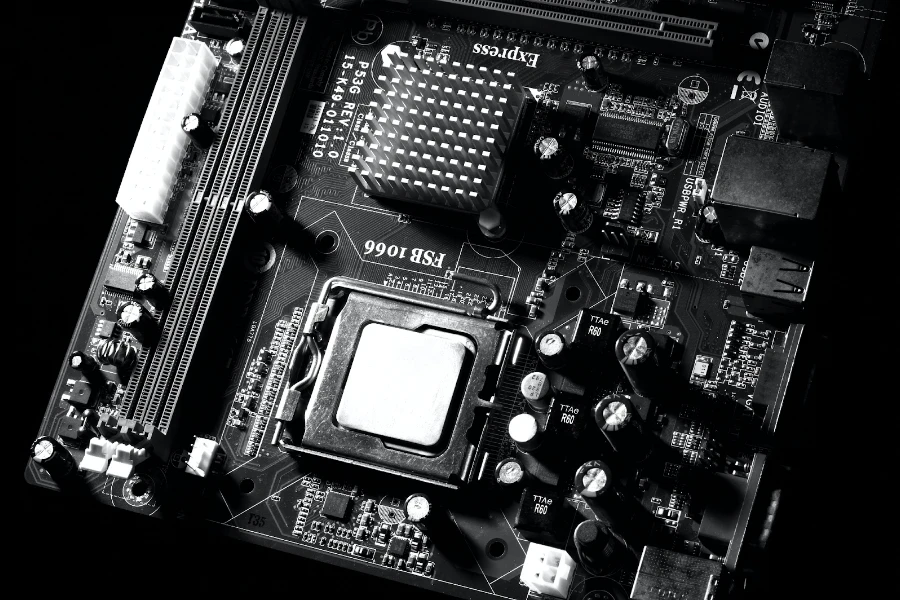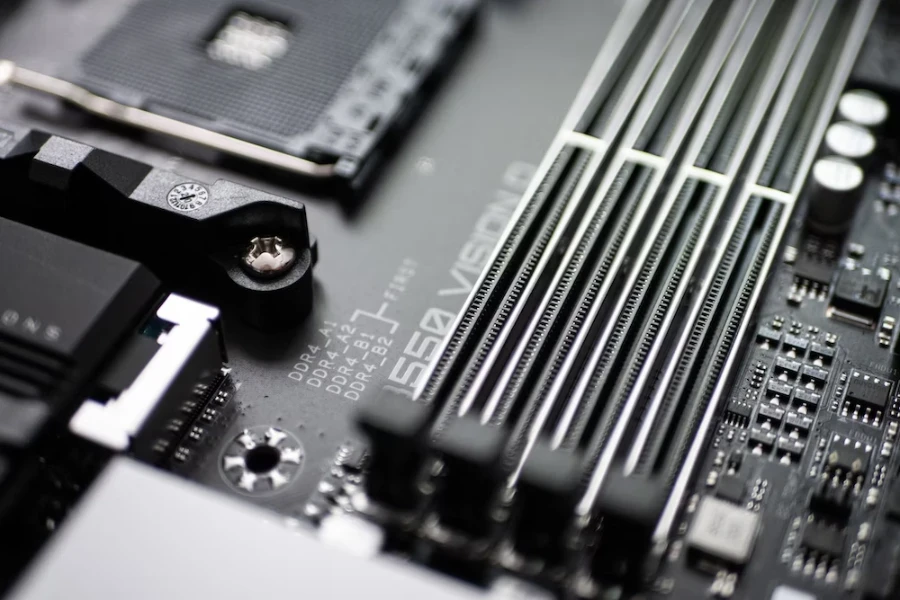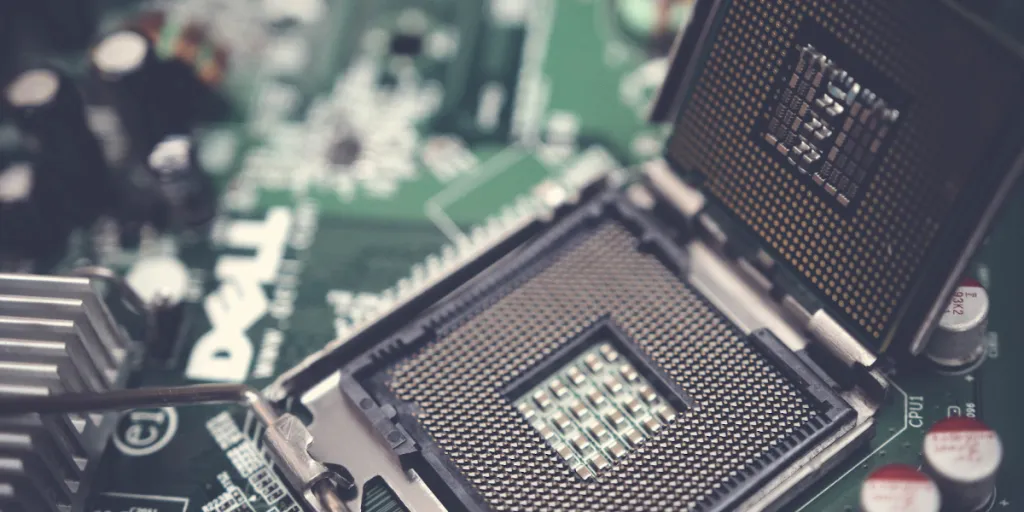PC building is a satisfying yet stressful venture that requires many serious considerations, one of them being finding the right motherboard. But like every other technology, the motherboard has seen its fair share of advancements in modern times.
They’ve evolved from limited, lower processing power to high-speed, advanced designs that could only be termed “futuristic” a few years back.
This article will dive into the latest motherboard trends set to make waves in 2024.
Table of Contents
The state of the motherboard market
Five motherboard tech trends to watch in 2024
Final words
The state of the motherboard market
In 2023, the motherboard market hit US$ 10.28 billion. But experts predict it will grow to US$ 22.46 billion by 2028 at a16.70% compound annual growth rate (CAGR).
One factor responsible for the market’s huge growth potential is the increased adoption of motherboards in electric vehicles. Other factors pushing the market forward include increased disposable income, population growth, and rising digitization.
Interestingly, motherboards built for gaming also witness increased demand due to evolved BIOS configurations. Thanks to such advancements, gamers can enjoy easy overclocking and enhanced compatibility with higher-end/faster gaming components.
Five motherboard tech trends to watch in 2024
High-performing chipset compatibility

One major trend that’s hard to ignore in the motherboard tech world is compatibility with high-performing chipsets. But what exactly is a chipset, and why is it such a big deal? Well, it’s the core of any motherboard that controls a big chunk of what consumers do with their PC.
So what’s driving this trend? It’s a number of different factors, but the biggest one is CPUs. The big names, Intel and AMD, keep manufacturing more powerful and efficient CPUs—and they need chipsets that can keep up with their high-performance capabilities.
Hence, motherboard manufacturers are on their toes, ensuring their products can handle these top-notch CPUs. In fact, they tailor-make high-performing chipsets to squeeze out every bit of potential from modern processors like the Intel Z790 and AMD X670.
DDR5 RAM support and capacity
DDR5 RAM (Double Data Rate 5) is the hot new thing in RAM technology. It’s the latest and greatest, offering various benefits over its older siblings. The best part is motherboard manufacturers have already integrated support for this new standard.
One of the reasons why DDR5 RAM support is trending is the enhanced performance it offers. Since DDR5 RAMs offer data transfer rates, boost bandwidth, and better power management, motherboards supporting them allow consumers to tap into all the juicy speeds.
But that’s not all. It’s also about future-proof setups. With software and apps getting hungrier for RAM, motherboards that easily handle larger memory modules are the game changers.
Regarding capacity, most recent ATX motherboards can easily support up to 128GB RAM. Contrarily, micro-ATX and mini-ITX boards support 64GB max, which is more than enough for most tasks, including gaming.
Multiple storage support
Things have moved from limited storage options to way better options. Consumers can now choose from good old traditional HDDs, faster SATA SSDS, lightning-quick M.2 NVMe SSDs, and compact M.2 SSDs.
Consumers also don’t have to pick just one solution because motherboards can handle multiple storage types. Interestingly, most offer up to six SATA slots, allowing users to build PCs with up to six storage drives.
However, M.2 drives don’t use SATA slots. Thankfully, motherboard manufacturers also account for this by adding M.2 slots. The best part is most modern motherboards offer at least two M.2 slots, while more advanced models feature three or four.
Overclocking capabilities
Overclocking is certainly gaining traction in the modern gaming world. It kicks the PC into turbo mode, pushing the graphics card, CPU, and memory for serious performance gains.
However, it’s not as easy as pushing a button due to the risks involved. Consumers often need unlocked processors and motherboards supporting overclocking to enjoy the performance boost.
Thankfully, most modern motherboards come ready with overclocking capabilities. They come equipped with compatibility for the necessary components to handle overclocking effectively, including power delivery systems and robust cooling solutions.
More connectivity options

Connectivity is a major consideration for anyone building a PC—and recent motherboards aren’t falling behind. Undoubtedly, consumers can find multiple USB ports, audio jacks, networking options, RGB headers, fan headers, and expansion slots.
Some motherboards even have the latest PCIe 5.0 standard (slots for graphic cards, sound cards, and storage devices). However, most consumers may not see the use for this other than future-proofing. So, PCIe 4.0 is the more popular connectivity tech for modern keyboards—for now.
Final words
Although most PC builders don’t always focus on the motherboard of their builds, it is still a really important consideration. Most of the features present on the motherboard determine the PC’s performance—especially factors like connectivity, RAM, and storage support.
And motherboards are evolving, offering support for DDR5 RAMs, high-performance chipset compatibility, overclocking capabilities, multiple storage options, and more connectivity options. These are the latest motherboard tech trends to look out for in 2024.




